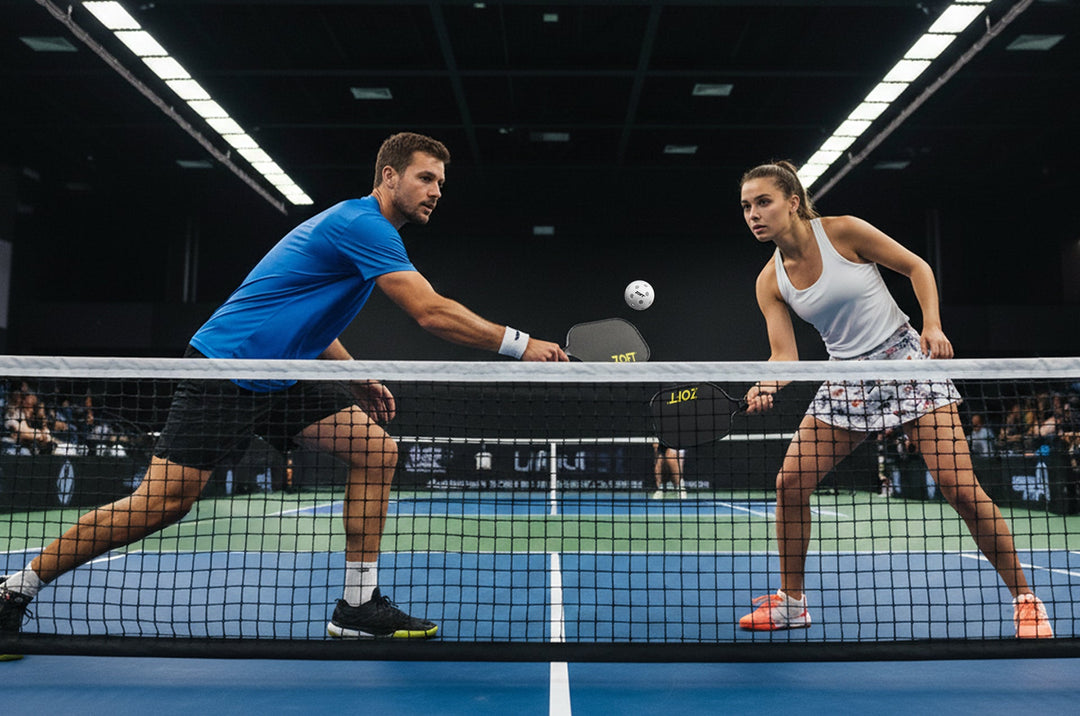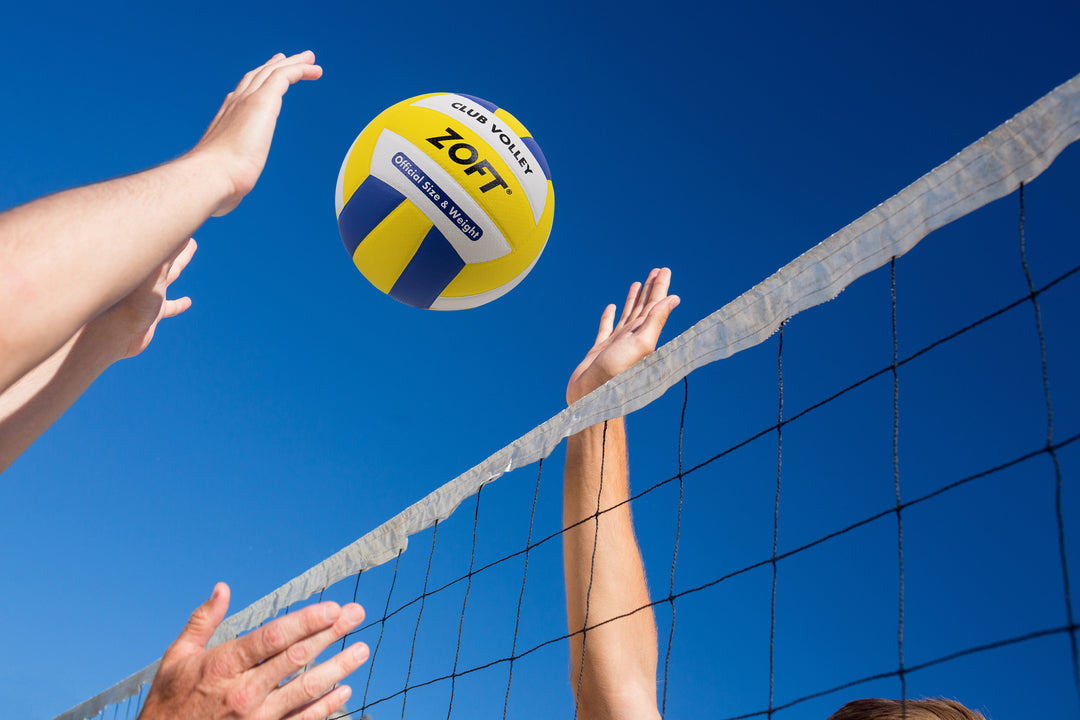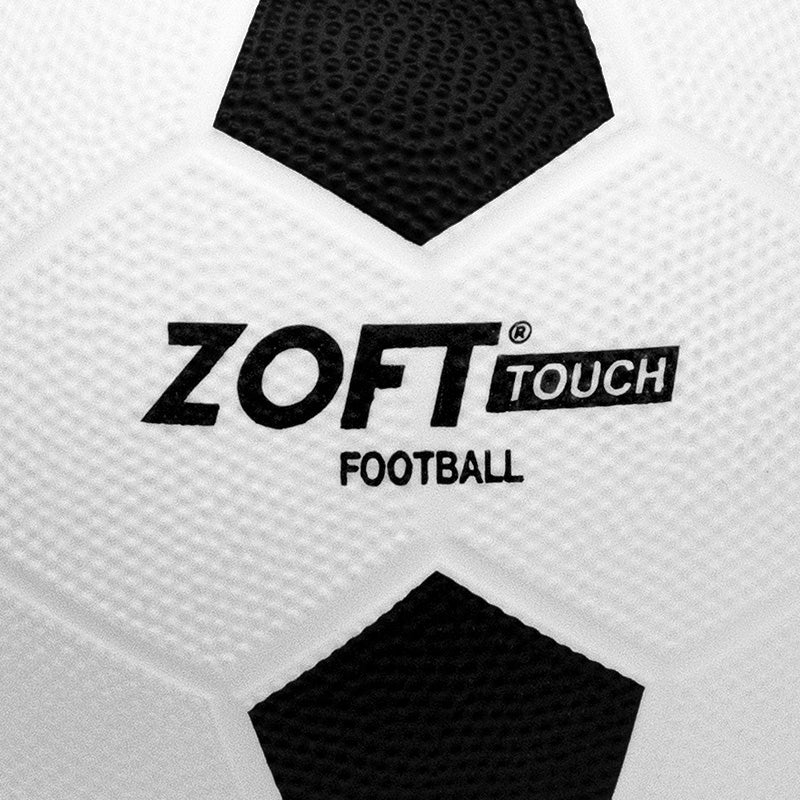Pickleball is an engaging sport that combines elements of tennis, badminton, and table tennis. This beginner friendly game is played on a court with a plastic ball, paddles, and a low net, making it suitable for players of all ages and skill levels.
Understanding the rules of pickleball is essential for both newcomers and seasoned players to enjoy the game to the fullest. From serving regulations to scoring systems and fault guidelines, understanding the rules ensures a fair and enjoyable gameplay experience. Additionally, understanding the differences in pickleball paddles such as different materials, weights, and grip can impact your performance on the court.
In this guide, we will cover the basics of pickleball rules, equipment selection, and court dimensions, giving you valuable insight into understanding the rules of pickleball.
Understanding Pickleball Rules
The rules of pickleball are relatively straightforward, with players using solid paddles to hit a perforated plastic ball over a net. The game typically follows a rally scoring system, where points can be won by either serving or receiving teams. Serving is done underhand and must clear the non-volley zone, known as the kitchen. Players must allow the ball to bounce once on each side before volleying, adding a strategic element to gameplay. The objective is to score points while following specific fault regulations, such as avoiding hitting the ball out of bounds or committing foot faults. Understanding and adhering to these rules ensure fair play and an enjoyable experience for players of all skill levels in the dynamic world of pickleball.
Choosing the Right Pickleball Paddle
When it comes to selecting the ideal pickleball paddle, several factors play a pivotal role in determining your performance on the court. Key considerations include the materials used in paddle construction, varying weights, and the grip style. Beginners looking to kickstart their pickleball journey should opt for paddles that offer a balance of control and power, making manoeuvrability easier as they hone their skills. When choosing a paddle, beginners should prioritise lightweight options with a comfortable grip to minimise fatigue during extended play sessions. For those wondering about the best pickleball paddles for beginners, focusing on paddle weight is crucial; selecting a paddle that feels comfortable and suits your playing style can significantly impact your game.
Whether you're a skilled player or a passionate beginner, the Zoft Club Pickleball Racket is the ideal option for enhancing your gameplay, offering an excellent blend of control, comfort, and power. Its carbon fibre surface elevates your precision, enabling you to place shots exactly where you want them while the PP honeycomb core guarantees that strong drives are backed by unparalleled power without losing control.
Exploring Pickleball Court Dimensions
When delving into the world of pickleball, understanding the specifics of a standard court layout is essential for players of all levels, especially for outdoor play. The dimensions of a pickleball court for outdoor games are standardised, measuring 44 feet in length and 20 feet in width. The court is divided into different zones, including the non-volley zone (kitchen), the service courts, and the boundaries marked by distinct lines. The kitchen, located on both sides of the net, serves as a non-volley zone where players cannot hit volleys. The service courts are split into right and left sections, each designated for serving during gameplay. The boundary lines outline the edges of the court, determining the validity of shots. Familiarising yourself with these key dimensions and layout specifics ensures a comprehensive understanding of the pickleball court for outdoor matches, enabling players to strategise effectively and optimise their performance on the court.
Beginner Tips and Strategies
Communication: In pickleball, verbal cues, hand signals, and even non-verbal communication play significant roles in coordinating your efforts with your partner. By discussing strategies before and during the game, you can create a unified approach to defence, offence, and court coverage.
Positioning: By maintaining an optimal position on the court, players can anticipate their opponents' shots more efficiently, giving them a competitive edge in rallying and scoring points. Strategic positioning allows players to read the game, anticipate where the ball is likely to go next, and proactively adjust their stance and movements to be in the best position to return the shot effectively.
Footwork: Effective footwork is vital in pickleball as it allows players to maintain balance, react quickly to shots, move efficiently around the court, and position themselves optimally for both offensive and defensive plays. Good footwork enhances agility, speed, and overall court coverage, ultimately contributing to improved performance and gameplay in pickleball.
Common mistakes: Steer clear of crowding the net and resist the temptation to play overly aggressive shots.
Regular practice: Consistent training and gameplay will help improve skills and confidence on the court. By dedicating time to regular practice, players can reap a multitude of benefits that contribute to their growth and enjoyment of the game.
Contrasting Pickleball with Other Racquet Sports
Pickleball distinguishes itself from traditional sports like tennis, badminton, and table tennis through a combination of rules and gameplay elements. Unlike tennis, which is typically played on a larger court with a net that divides the playing area, pickleball is played on a smaller court with a lower net height. In comparison to badminton, pickleball utilises a paddle instead of a racket, and the game is often played in doubles format, promoting teamwork and coordination. Table tennis, on the other hand, differs from pickleball in its fast-paced nature and emphasis on spin tactics due to the smaller playing surface and lightweight ball. These distinctions highlight the diverse strategies, skills, and dynamics that make each racquet sport unique and appealing to enthusiasts of all levels.
Commonly Asked Questions About Pickleball
What equipment do I need to play pickleball? To play pickleball, you will need a paddle, which is similar to a table tennis paddle but larger, and a perforated plastic ball, specifically designed for pickleball. Additionally, players typically wear comfortable athletic shoes and clothing suitable for movement on the court.
Is pickleball suitable for all age groups and skill levels? Yes, pickleball is a highly inclusive sport that caters to individuals of all ages and skill levels. Whether you're a beginner looking for a fun recreational activity or a seasoned athlete seeking a competitive challenge, pickleball offers a versatile playing experience for everyone.
Can pickleball be played both indoors and outdoors? Absolutely! One of the appealing aspects of pickleball is its versatility in playing environments. While indoor courts provide controlled conditions for gameplay, outdoor courts offer the added enjoyment of fresh air and natural surroundings, making pickleball a year-round sport for enthusiasts.
What are the health benefits of playing pickleball? Playing pickleball offers a wide range of health benefits, including improved cardiovascular fitness, enhanced agility and coordination, increased muscle strength, and reduced stress levels. The dynamic nature of the game helps players stay active, burn calories, and engage in a social and enjoyable form of exercise.
Are there specific strategies or techniques to improve my pickleball game? Yes, there are various strategies and techniques that can enhance your pickleball skills. These include practicing volleys for effective net play, developing a consistent serve, improving footwork for better court coverage, and learning to anticipate opponents' shots for strategic positioning on the court. Engaging in regular practice and seeking guidance from experienced players or coaches can significantly elevate your pickleball game.








